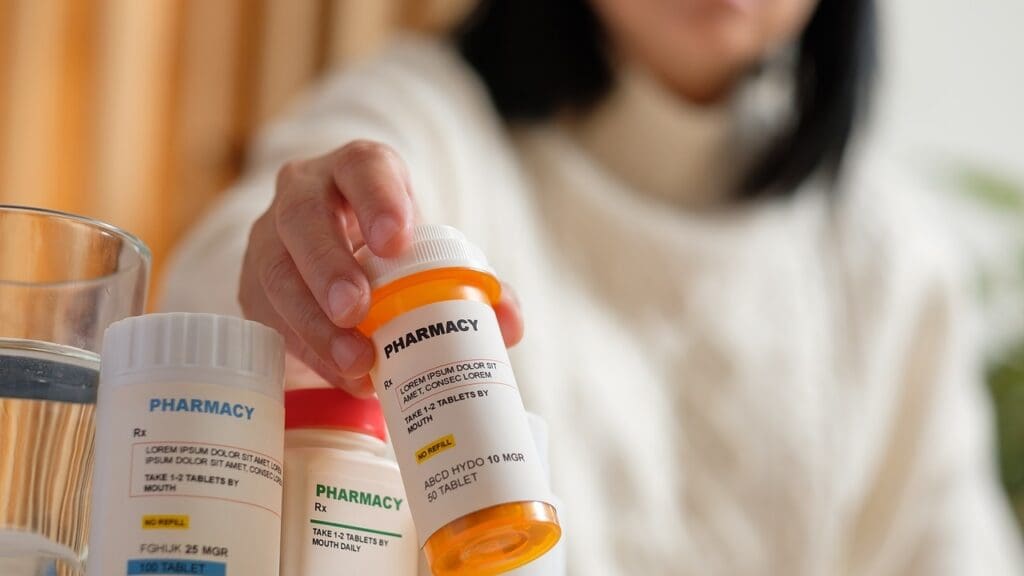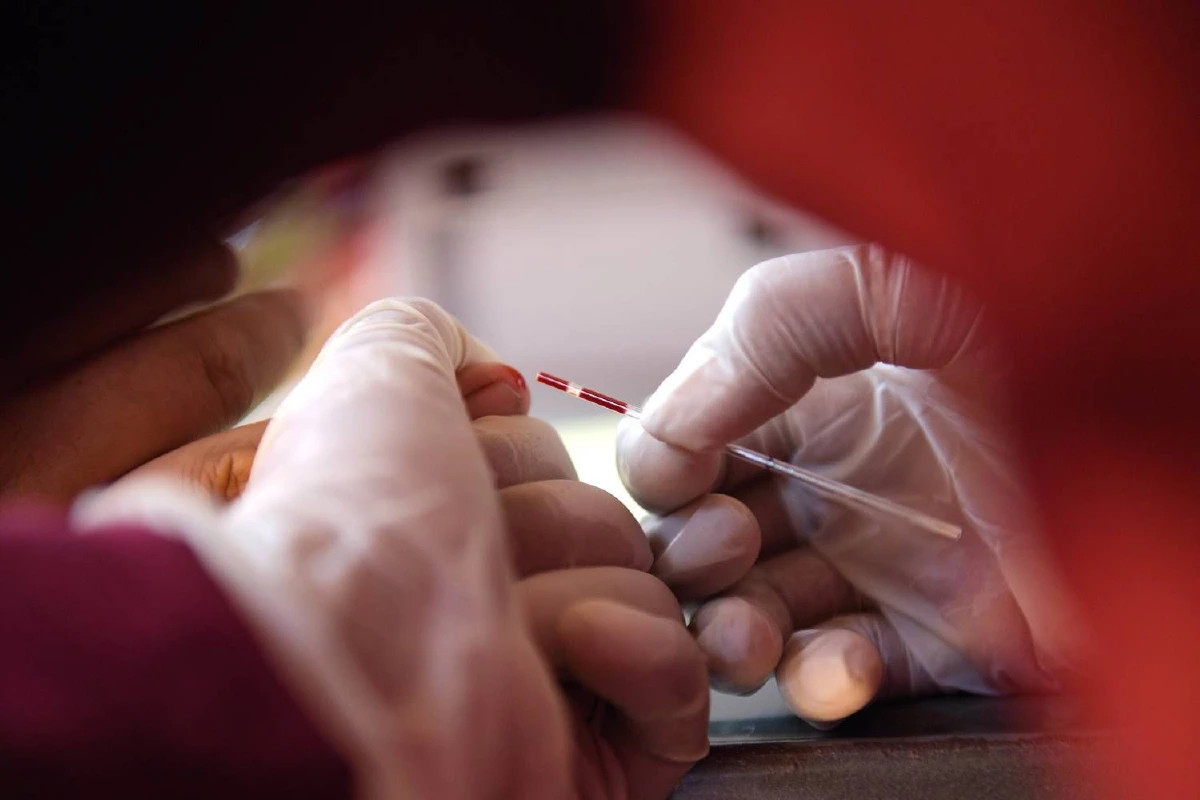Last Updated on November 26, 2025 by Bilal Hasdemir

Androgen Deprivation Therapy (ADT) is key in fighting prostate cancer. It stops the body from making male hormones, which help cancer grow. There are many drugs, like LHRH agonists and antagonists, and anti-androgens, each working in its own way.
Medicines like leuprolide, goserelin, and triptorelin are LHRH agonists. Degarelix is an LHRH antagonist. Anti-androgens, such as bicalutamide, nilutamide, and flutamide, block androgens’ effects. Knowing about these prostate cancer hormone therapy drugs helps patients find the best treatments.
Key Takeaways
- Androgen Deprivation Therapy (ADT) is a cornerstone of prostate cancer treatment.
- ADT involves medications that suppress the production of male hormones.
- LHRH agonists and antagonists, along with anti-androgens, are types of ADT medications.
- Examples of ADT drugs include leuprolide, goserelin, triptorelin, and degarelix.
- Understanding ADT is key for patients looking for effective prostate cancer treatment.
Understanding Androgen Deprivation Therapy for Prostate Cancer
Androgen deprivation therapy (ADT) is key in treating prostate cancer. It helps slow down the disease’s growth. We’ll look into how ADT works and its role in prostate cancer treatment.
The Role of Androgens in Prostate Cancer Development
Androgens, like testosterone, are important for men. They help prostate cancer grow. This makes androgens a target for treatment.
How ADT Works to Suppress Testosterone
ADT lowers testosterone levels. This stops prostate cancer cells from growing. Medications like LHRH agonists and antagonists are used for this.
Prevalence and Importance in Treatment Protocols
ADT is common in prostate cancer treatment, mainly for advanced cases. It has been shown to improve survival rates. It’s a key part of treatment plans, often paired with other therapies.
Understanding ADT’s role in prostate cancer treatment is important. It helps us give better care to each patient. Our aim is to meet the unique needs of every patient.
Androgen Deprivation Therapy Examples: Common Medications
Androgen deprivation therapy (ADT) is key in treating prostate cancer. It uses different drugs to lower testosterone levels. These drugs help manage the disease and improve patient results.
ADT drugs fall into several groups, each working in its own way. The main types are LHRH agonists, LHRH antagonists, anti-androgens, and next-generation anti-androgens.
LHRH Agonists: Leuprolide, Goserelin, and Triptorelin
LHRH agonists first raise testosterone levels. But, with ongoing use, they lower testosterone production. Examples include:
- Leuprolide: Available in various forms, like injections every 1, 3, or 6 months.
- Goserelin: Given as an implant every 1 or 3 months.
- Triptorelin: Administered via injection every 1, 3, or 6 months.
LHRH Antagonists: Degarelix and Relugolix
LHRH antagonists block LHRH action right away. This leads to a quick drop in testosterone without the initial rise seen with agonists. Examples include:
- Degarelix: Given via monthly injections.
- Relugolix: Taken orally once daily.
Anti-Androgens: Bicalutamide, Nilutamide, and Flutamide
Anti-androgens block androgens at the receptor level. They’re often used with other ADT drugs. Examples include:
- Bicalutamide: Taken orally once daily.
- Nilutamide: Administered orally once daily.
- Flutamide: Taken orally three times a day.
Next-Generation Anti-Androgens: Enzalutamide and Apalutamide
Next-generation anti-androgens bind more strongly to the androgen receptor. They’re used for advanced prostate cancer. Examples include:
- Enzalutamide: Taken orally once daily.
- Apalutamide: Administered orally once daily.
These ADT drugs provide various treatment options for prostate cancer patients. They help create personalized treatment plans based on individual needs and disease characteristics.
LHRH Agonists and Antagonists: Mechanism and Administration
Androgen deprivation therapy (ADT) uses LHRH agonists and antagonists to lower testosterone. This is key in fighting prostate cancer. We’ll look at how these drugs work, their dosing, and their differences.
How LHRH Medications Affect Hormone Production
LHRH agonists, like leuprolide, first raise testosterone levels. But, with time, they lower it. LHRH antagonists, such as degarelix, right away cut down testosterone without a rise first.
Injection Schedules and Administration Methods
LHRH drugs are given by injection, with different schedules. Leuprolide can be given monthly, every three months, or every six months. Goserelin is given every three months. Degarelix, an LHRH antagonist, is given monthly.
Differences Between Agonists and Antagonists
The main difference is how they affect testosterone levels.
Initial Testosterone Flare with Agonists
LHRH agonists first raise testosterone, causing a temporary flare in cancer symptoms. To lessen this, anti-androgens are used with agonists at the start.
Immediate Testosterone Suppression with Antagonists
LHRH antagonists, though, right away lower testosterone without a flare. This makes them better for some, like those with advanced cancer or big symptoms.
| Characteristics | LHRH Agonists | LHRH Antagonists |
|---|---|---|
| Initial Effect on Testosterone | Increase (flare) | Immediate decrease |
| Administration Frequency | Monthly to every 6 months | Monthly |
| Examples | Leuprolide, Goserelin, Triptorelin | Degarelix, Relugolix |
Anti-Androgen Medications: Blocking Testosterone Action
Testosterone fuels prostate cancer growth. Anti-androgen medications block its effects. They are key in ADT treatment for prostate cancer, slowing or stopping cancer cell growth.
First-Generation Anti-Androgens
First-generation anti-androgens like bicalutamide, nilutamide, and flutamide were early anti-androgen drugs. They block testosterone by competing for androgen receptors. Experts say anti-androgen therapy has greatly improved prostate cancer management.
Next-Generation Anti-Androgens
Next-generation anti-androgens, including enzalutamide and apalutamide, offer better prostate cancer hormone therapy treatment. They are more effective and safer than older drugs.
CYP17 Inhibitors: Abiraterone Acetate
Abiraterone acetate blocks testosterone production in adrenal glands and prostate cancer cells. It’s used with other treatments in endocrine therapy for prostate cancer.
Combination Therapy Approaches
Combining anti-androgen medications with other treatments like LHRH agonists or chemotherapy boosts ADT treatment for prostate cancer effectiveness. This approach tailors treatment to each patient’s needs.
Anti-androgen medications are vital in prostate cancer treatment. Understanding their types and how they work helps us see the importance of personalized care in prostate cancer hormone therapy treatment.
ADT Injection Protocols and Administration Schedules
Androgen Deprivation Therapy (ADT) is a key treatment for prostate cancer. It involves different injection protocols and schedules. We aim to help you understand how these treatments work.
Monthly Injection Options
Some patients prefer monthly injections for ADT. These injections contain LHRH agonists or antagonists. They help lower testosterone levels in the body. This method offers a steady and reliable treatment plan.
Three-Month Depot Formulations
Three-month depot injections are another option. They are less frequent than monthly injections. These depot injections slowly release the medication, keeping testosterone levels low.
Six-Month Extended-Release Medications
New six-month extended-release medications have been developed. They reduce the need for frequent injections. These medications last longer, making treatment easier to follow and possibly more effective.
Oral Medication Regimens
Oral medications are also available for ADT. These include anti-androgens. They can be used alone or with injectable therapies to control testosterone levels.
We know each patient is different. The right ADT schedule depends on individual needs. Below is a table showing the different options:
| Administration Schedule | Medication Type | Frequency |
|---|---|---|
| Monthly Injections | LHRH agonists/antagonists | Every 1 month |
| Three-Month Depot | LHRH agonists | Every 3 months |
| Six-Month Extended-Release | LHRH agonists | Every 6 months |
| Oral Medications | Anti-androgens | Daily |
Understanding ADT injection protocols and schedules helps patients and doctors choose the best treatment for prostate cancer.
Continuous vs. Intermittent Androgen Deprivation Therapy
Prostate cancer treatment often uses ADT in two ways: continuously or intermittently. Each method has its own benefits and drawbacks. The choice depends on the cancer stage, patient health, and possible side effects.
Benefits and Drawbacks of Continuous ADT
Continuous ADT is used for advanced prostate cancer. It keeps testosterone levels low with ongoing medication. This can slow cancer growth and possibly increase survival chances.
But, it can cause side effects like hot flashes, fatigue, and osteoporosis. These can lower the patient’s quality of life.
Intermittent ADT: Treatment Holidays and Protocols
Intermittent ADT has treatment cycles with breaks in between. This method aims to lessen side effects while keeping benefits. It can improve life quality during breaks.
But, it needs careful watching to make sure cancer doesn’t grow during breaks.
Patient Selection for Different Approaches
Choosing the right ADT depends on the patient. Factors include cancer stage, aggressiveness, and overall health. For example, aggressive cancer might need continuous ADT, while less aggressive might do better with intermittent.
As the American Cancer Society website explains, each patient is unique. Their specific situation helps decide the best ADT strategy.
Monitoring During Treatment
Regular checks are key, no matter the ADT choice. They help see how well treatment is working and manage side effects. This includes PSA tests, doctor visits, and checking for side effects.
Changes to the treatment plan might be needed based on how the patient responds and handles therapy.
Common Side Effects of Androgen Deprivation Therapy
Androgen Deprivation Therapy (ADT) is a key treatment for advanced prostate cancer. But, it has many side effects that patients need to know about. It’s important to understand both the short-term and long-term effects on health and well-being.
Short-Term Side Effects
Short-term side effects happen early in treatment and can really affect a patient’s life quality.
Hot Flashes and Sexual Dysfunction
Hot flashes are a common side effect of ADT, and they can be very bad. ADT also causes sexual problems, like low sex drive and trouble getting an erection. These issues can make patients feel bad about themselves and affect their relationships.
Fatigue and Mood Changes
ADT can make you feel very tired, making simple tasks hard. It can also cause mood changes, like feeling sad or anxious. But, these problems can be helped with the right support and treatments.
Long-Term Side Effects
Long-term side effects can show up over time and can really affect a patient’s health.
Bone Density Loss and Fracture Risk
ADT can make bones lose density, raising the risk of osteoporosis and fractures. This is a big worry because fractures can lead to more health problems and make it hard to move around.
Metabolic Changes and Cardiovascular Risk
Long-term use of ADT can change how the body works, including the heart. These changes can up the risk of heart disease. So, it’s very important for patients to watch their heart health closely.
Cognitive Effects
Some studies suggest ADT might affect the brain, but the evidence is not clear yet. Patients and doctors should keep an eye out for any changes in thinking during treatment.
Knowing about the side effects of ADT is key to managing them well. By understanding these effects, patients and doctors can work together to reduce risks and improve life during treatment.
| Side Effect | Description | Management Strategies |
|---|---|---|
| Hot Flashes | Frequent and severe hot flashes | Lifestyle changes, medication |
| Sexual Dysfunction | Decreased libido, erectile dysfunction | Counseling, medication |
| Fatigue | Persistent tiredness | Exercise, rest, nutritional support |
| Bone Density Loss | Increased risk of osteoporosis and fractures | Bisphosphonates, lifestyle changes |
“The management of ADT side effects is key to bettering the life of prostate cancer patients. A full approach that includes lifestyle changes, supportive therapies, and medicines can lessen these effects.”
Managing ADT Side Effects: Supportive Therapies and Supplements
Managing ADT side effects is key in prostate cancer care. It ensures patients get the support they need. ADT is a main treatment for prostate cancer, but it can cause big side effects.
Bone Health Management
Bone health is a big worry for ADT patients. The therapy can lower bone density, raising the risk of osteoporosis and fractures.
Bisphosphonates and RANK Ligand Inhibitors
Bisphosphonates help stop bone loss. Recent guidelines recommend them for ADT-related bone loss. RANK ligand inhibitors, like denosumab, also help lower fracture risk.
Calcium and Vitamin D Supplementation
Calcium and vitamin D supplements are good for bone health. It’s important to get enough of these nutrients to keep bones strong.
Cardiovascular Risk Reduction
ADT can raise the risk of heart problems. So, it’s important to manage heart risk.
A study found that men with prostate cancer on ADT face a higher risk of heart disease. This shows the need for heart risk reduction strategies.
This includes lifestyle changes and possibly medicines for high blood pressure and high cholesterol.
Exercise and Dietary Interventions
Exercise and diet changes can help with ADT side effects. Regular physical activity helps with weight, heart health, and bone strength.
Eating a balanced diet with fruits, veggies, and whole grains is good for health. Try to avoid processed foods and foods high in sugar and fats.
Medications for Hot Flashes and Sexual Function
Hot flashes and sexual problems are common with ADT. There are medicines to help with these issues.
For example, some antidepressants and gabapentin can lessen hot flashes. Phosphodiesterase inhibitors can help with erectile dysfunction.
Conclusion: The Future of Androgen Deprivation Therapy
Androgen deprivation therapy (ADT) is key in treating prostate cancer. It uses different methods to lower testosterone levels, slowing cancer growth. This includes LHRH agonists and antagonists, anti-androgens, and newer treatments.
New research is changing how we use ADT in treating prostate cancer. We’re seeing new treatments and ways to use ADT. These aim to reduce side effects while keeping the treatment effective.
Looking ahead, ADT will keep being a big part of prostate cancer treatment. By keeping up with new research, we can give patients better, more tailored treatments. This will help improve their quality of life and treatment results.
FAQ
What is Androgen Deprivation Therapy (ADT) for prostate cancer?
ADT is a treatment for prostate cancer. It uses medicines to lower male hormones, called androgens. These hormones help prostate cancer grow.
How does ADT work to treat prostate cancer?
ADT lowers testosterone levels. This slows or stops cancer cells from growing. It uses different medicines to do this.
What are LHRH agonists, and how are they used in ADT?
LHRH agonists, like leuprolide, first raise then lower testosterone levels. They are key in treating prostate cancer with ADT.
What is the difference between LHRH agonists and antagonists?
LHRH agonists first raise then lower testosterone. LHRH antagonists, like degarelix, block testosterone right away. This affects how fast they work and their side effects.
What are anti-androgens, and how do they work?
Anti-androgens, such as bicalutamide, block testosterone’s effect on cancer cells. They are used with other ADT medicines to fully block androgens.
How are ADT medications administered?
ADT medicines are given as injections or pills. Injections are given monthly or less often. Pills are taken every day.
What is the difference between continuous and intermittent ADT?
Continuous ADT is ongoing treatment. Intermittent ADT has breaks in treatment. The choice depends on the patient’s cancer and how well they respond to treatment.
What are the common side effects of ADT?
Side effects include hot flashes, fatigue, and weight gain. They also include loss of libido and osteoporosis. Long-term effects can be heart disease and brain changes.
How can ADT side effects be managed?
Side effects are managed with supportive care. This includes bone health, heart health, and treatments for hot flashes and sexual issues.
What is the role of next-generation anti-androgens in ADT?
Next-generation anti-androgens, like enzalutamide, offer better androgen blocking. They are used in advanced cancer and have shown better results in studies.
Can ADT be used in combination with other prostate cancer treatments?
Yes, ADT is often combined with other treatments like radiation or surgery. This combination can improve treatment results and survival chances.
References
- National Center for Biotechnology Information (NCBI) / PMC: https://pmc.ncbi.nlm.nih.gov/articles/PMC3735079/
- Signal Transduction and Targeted Therapy / Nature: https://www.nature.com/articles/s41391-018-0079-0
- OncoLink: https://www.oncolink.org/cancers/prostate/treatments/taking-androgen-deprivation-therapy-adt-for-prostate-cancer








